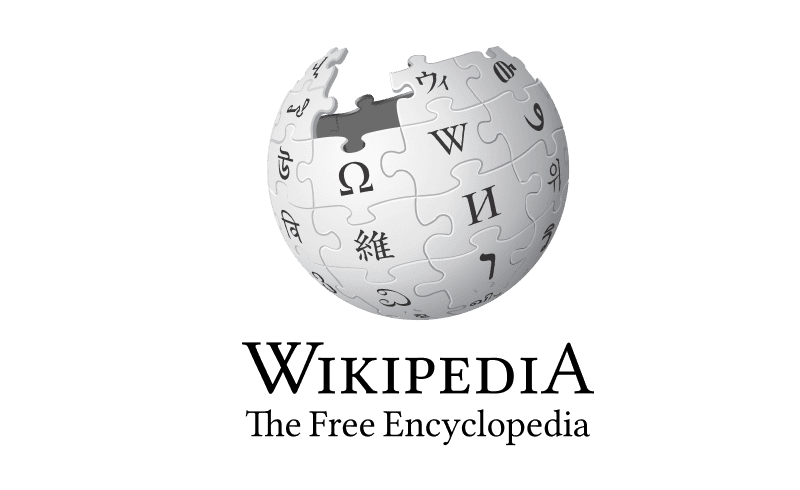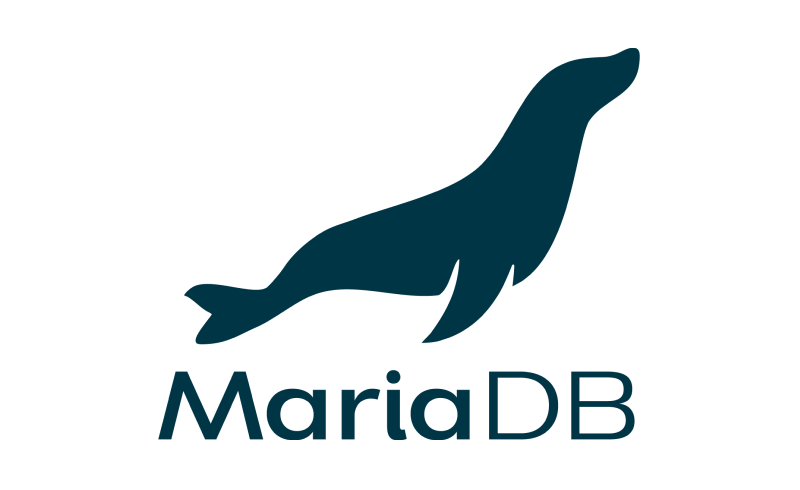After the acquisition of MySQL by Oracle, and the rumors of the database becoming a paid service, developers from all over were looking for a new option. MariaDB brought this by offering a new, relational database management system that was custom built by the original developers of MySQL, with the guarantee that it was and always will be open source and available for free.
What is MariaDB?
MariaDB is a powerful and widely used relational database management system (RDBMS) that has gained popularity among organizations seeking efficient data management solutions. This open-source software, derived from the MySQL (When MySQL was acquired by Oracle in 2009, Michael Widenius, the original creator of MySQL, designed this replacement database with a guarantee that it would always be free and open source) which offers compatibility with MySQL databases. MariaDB is designed to handle the complexities of organizing and storing structured data, providing a reliable foundation for various applications and systems.
As a feature-rich database management system, MariaDB lets organizations efficiently store and retrieve data while providing data integrity and security. It uses the widely recognized Structured Query Language (SQL) to facilitate interaction with databases, allowing users to perform data manipulations, queries, and operations. With the architecture of MariaDB organizations access a scalable and high-performance solution, capable of handling the demands of modern data-driven environments.
MariaDB offers a range of advanced features and functionalities that cater to the needs of enterprises, including support for transaction processing, indexing, backup and recovery mechanisms, and data clustering. With its compatibility and integration capabilities, MariaDB provides a seamless transition path for organizations using MySQL databases, ensuring minimal disruption during migration or system upgrades.
How does MariaDB work?
MariaDB operates as a relational database management system (RDBMS) that efficiently organizes and manages structured data. The database follows a client-server architecture, where client applications interact with the MariaDB server to store, retrieve, and manipulate data. The server component of MariaDB is responsible for handling database requests, executing queries, and managing data storage.
When a client application communicates with the MariaDB server, it sends SQL statements that define the desired operations on the data. These statements are parsed and processed by the server, which generates an optimized execution plan. The execution plan outlines how the query should be performed, including which indexes to use, data access methods, and join operations.
To store data, MariaDB uses a file-based storage system. The data is organized into tables, which consist of rows and columns. Each table has a defined structure known as a schema, which outlines the columns, data types, and constraints. The data within the tables is stored in files on the disk, with indexes created to facilitate efficient data retrieval.
MariaDB employs various techniques to optimize query performance. It utilizes indexing, which involves creating data structures that allow for quick access to specific data subsets. Indexes improve query execution by reducing the need to scan the entire dataset. MariaDB additionally employs query optimization strategies such as join optimization, where the server determines the most efficient way to combine data from multiple tables.
Another important aspect of MariaDB is support for transactions. A transaction is a set of database operations that should be treated as a single logical unit. MariaDB maintains the integrity and consistency of data by implementing the ACID (Atomicity, Consistency, Isolation, Durability) properties. This means that transactions are executed in an all-or-nothing manner, ensuring that either all changes are committed or none at all, preventing data inconsistencies.
Unique features of MariaDB
MariaDB boasts a wide range of powerful features that make it a preferred choice for organizations seeking a reliable and flexible database management system. With its comprehensive architecture and extensive functionality, MariaDB offers a comprehensive solution for efficient data management, storage, and retrieval.
1. Galera cluster | MariaDB incorporates the Galera Cluster technology, for synchronous multi-master replication. Multiple database nodes can operate as a cluster, providing data consistency and high availability. Galera Cluster employs a mechanism called “certification-based replication” to synchronize transactions across all nodes in the cluster, providing real-time replication and seamless failover capabilities. |
2. Xpand | MariaDB’s Xpand is a distributed SQL solution that brings scalability and high performance to distributed database environments. Xpand allows distribution of data across multiple database nodes, horizontal scaling and accommodation of high workloads. It leverages distributed query processing and automatic data sharding techniques to efficiently handle large datasets and deliver fast query execution. |
3. MariaDB ColumnStore | MariaDB ColumnStore is a columnar storage engine specifically designed for analytical workloads. It stores data in a column-wise fashion, optimizing data compression and query performance for analytical queries. ColumnStore supports efficient aggregation, filtering, and analysis of large datasets, making it well-suited for data warehousing and business intelligence applications. |
4. MaxScale | MaxScale is a database proxy and data routing platform integrated with MariaDB. It acts as a middleware layer between client applications and MariaDB servers, providing advanced data routing, caching, and load balancing capabilities. |
5. JSON support | MariaDB provides robust support for JSON (JavaScript Object Notation) data, allowing users to store, index, and query JSON documents within the database. This feature helps with the integration with modern web applications and allows handling of JSON data. |
6. Instant add column | The Instant Add Column feature in MariaDB allows users to add new columns to existing tables without requiring a table rebuild or data copy. |
7. Virtual columns | MariaDB supports the concept of virtual columns, which are computed columns based on expressions or functions. Virtual columns do not occupy physical storage space but can be used in queries, indexes, and other operations. |
8. Audit plugin | MariaDB offers an audit plugin that gives comprehensive auditing and logging of database activities. This plugin allows organizations to track and monitor database access, modifications, and other critical operations for security, compliance, and troubleshooting purposes. |
9. Threadpool | The threadpool feature in MariaDB optimizes thread handling and resource utilization, particularly in highly concurrent environments. |
10. User roles | MariaDB introduces the concept of user roles, which simplifies and centralizes user access management. User roles enable the assignment of privileges and permissions to groups of users, streamlining user administration and enhancing security. |
Who uses MariaDB?
According to Enlyft, MariaDB has been used by 12,500+ companies between 2018 and 2023, with the majority of these averaging a turnover of between $1-$50 million per year.
Virgin Media O2 was one of the first telecommunications providers to offer free public Wi-Fi throughout the UK. They originally used on premises MySQL in 2010, however found the database struggled to match with their rapid expansion. As a result of this, Virgin Media O2 switched to MariaDB SkySQL as database-as-a-service to meet their ever growing demands.
“SkySQL does what it says on the tin. MariaDB is very flexible, very understanding, very agile. And they like to take on a problem. If you’re comparing cloud databases, my advice would be to go with SkySQL, no question”
– Paul Greaves,
– Head of Automation and Orchestration, Infrastructure Cloud Engineering and Delivery at Virgin Media O2
MariaDB’s strengths
MariaDB is a free and open source database management system that offers backward compatibility, scalability, and multiple engine support. Its emphasis on speed and performance, as well as its large ecosystem and community, make it a reliable and well-supported option for organizations.
Performance and scalability
MariaDB is designed to deliver exceptional performance and scalability, allowing organizations to handle increasing workloads and growing datasets. With advanced query optimization techniques, efficient indexing, and support for distributed database technologies like Galera Cluster and Xpand, MariaDB offers improved query response times and the ability to scale horizontally as the demands of the system increase.
Compatibility with MySQL
As a MySQL-compatible database system, MariaDB ensures seamless integration with existing MySQL databases and applications. This compatibility makes migration from MySQL to MariaDB relatively straightforward, minimizing disruptions and allowing organizations to leverage the benefits of MariaDB without significant reengineering efforts.
Community-driven innovation
MariaDB benefits from a strong and vibrant open-source community, continuously driving innovation and development. The community actively contributes to the improvement of the database system, introducing new features, fixing bugs, and improving overall performance. This collaborative approach ensures that MariaDB remains at the forefront of modern database technologies.
Security measures
Prioritizing data security and providing several security features to safeguard sensitive information, MariaDB has many impressive security measures and offers support for encryption of data at rest and in transit, protecting data from unauthorized access or interception. Additionally, MariaDB incorporates user roles and privileges, allowing organizations to implement fine-grained access controls and enforce data privacy.
Flexibility and extensibility
MariaDB offers a high degree of flexibility and extensibility, enabling organizations to tailor the database system to their specific needs. The modular nature of MariaDB allows for the addition of storage engines, plugins, and extensions, improving functionality and supporting various use cases. This flexibility makes sure that MariaDB can adapt to changing requirements and integrate seamlessly into different environments.
Active and responsive community support
MariaDB benefits from an active and responsive community support network. The community provides valuable resources, forums, and documentation, offering assistance and guidance to users facing challenges or seeking best practices. This vibrant community ecosystem ensures that users have access to a wealth of knowledge and support when using MariaDB.
Cost-effective solution
As an open-source database management system, MariaDB offers a cost-effective alternative to proprietary database solutions. Organizations can leverage the power and capabilities of MariaDB without the burden of hefty licensing fees, making it an attractive choice for businesses aiming to optimize their IT budgets
Cross-platform compatibility
Designed to be compatible with various operating systems, including Linux, Windows, and macOS, MariaDB’s cross-platform compatibility allows organizations to deploy on their preferred infrastructure and operating environment, providing flexibility and ease of integration within existing IT ecosystems.
Comprehensive monitoring and administration tools
MariaDB provides a range of monitoring and administration tools that empower database administrators to efficiently manage and monitor their MariaDB deployments. Tools like MariaDB Monitor and MariaDB MaxScale simplify the monitoring and optimization of database performance, enabling proactive maintenance and ensuring optimal utilization of system resources.
Wide language support
MariaDB supports multiple programming languages and interfaces, including popular options like PHP, Java, Python, and more. This wide language support allows developers to work with MariaDB using their preferred programming language, promoting seamless integration with different applications and frameworks.
“MariaDB’s emphasis on speed and performance, as well as its large ecosystem and community, make it a reliable and well-supported option for organizations.”
Additional users of MariaDB

Wikipedia, one of the world’s largest collaborative knowledge platforms, relies on MariaDB to power its backend infrastructure. MariaDB’s scalability, performance, and open-source nature make it a suitable choice for handling the vast amount of data and user interactions on Wikipedia.

Booking.com, a renowned online travel agency, employs MariaDB as a foundational component of its platform. The scalability, reliability, and transactional capabilities of MariaDB enable Booking.com to manage and process millions of hotel bookings, ensuring seamless user experiences and efficient data management.
Exploring the limitations of MariaDB
While MariaDB offers many advantages, such as being free and open-source with support for multiple engines, there are also several potential disadvantages to be aware of. In this section, we will discuss some of the limitations of MariaDB, including recovery for corrupted data not being linear, slower caching compared to competitors, and limited third-party and enterprise support. Additionally, we will explore the challenges users may face with compatibility and documentation, as well as limited ecosystem and vendor support.
Limited third-party tool support | Compared to some other well-established database management systems, MariaDB may have limited support for certain third-party tools and applications. While it offers compatibility with many popular programming languages and interfaces, there may be a smaller ecosystem of tools specifically developed for MariaDB, which could limit the options available for specific needs or integrations. |
Smaller adoption in enterprise environments | Although MariaDB is gaining popularity, it may still have a smaller adoption rate compared to legacy database systems like Oracle or Microsoft SQL Server in enterprise environments. This could result in a relatively smaller community of enterprise-focused resources, certifications, and specialized support services, which might be a consideration for organizations with specific enterprise-grade requirements. |
Learning curve for database administrators | While MariaDB is MySQL-compatible, it does have certain differences and additional features, which may require some learning and adaptation for database administrators familiar with other database systems. The need to acquire knowledge and expertise specifically in MariaDB could pose a challenge for organizations transitioning from other database platforms. |
Perception of being a forked database | As MariaDB is derived from MySQL, some individuals or organizations may perceive it as a forked database rather than an entirely independent system. This perception could potentially raise questions regarding the long-term roadmap, future development, and community support for MariaDB. However, it’s worth noting that MariaDB has its own development team and a strong commitment to innovation and improvement. |
Complexity in managing highly distributed environments | While MariaDB offers clustering technologies like Galera Cluster for high availability and distributed deployments, managing and configuring complex distributed environments can be challenging. Proper planning, expertise, and monitoring are required to ensure optimal performance and data consistency across multiple nodes. |
“MariaDB is a free and open source database management system that offers backward compatibility, scalability, and multiple engine support.”

